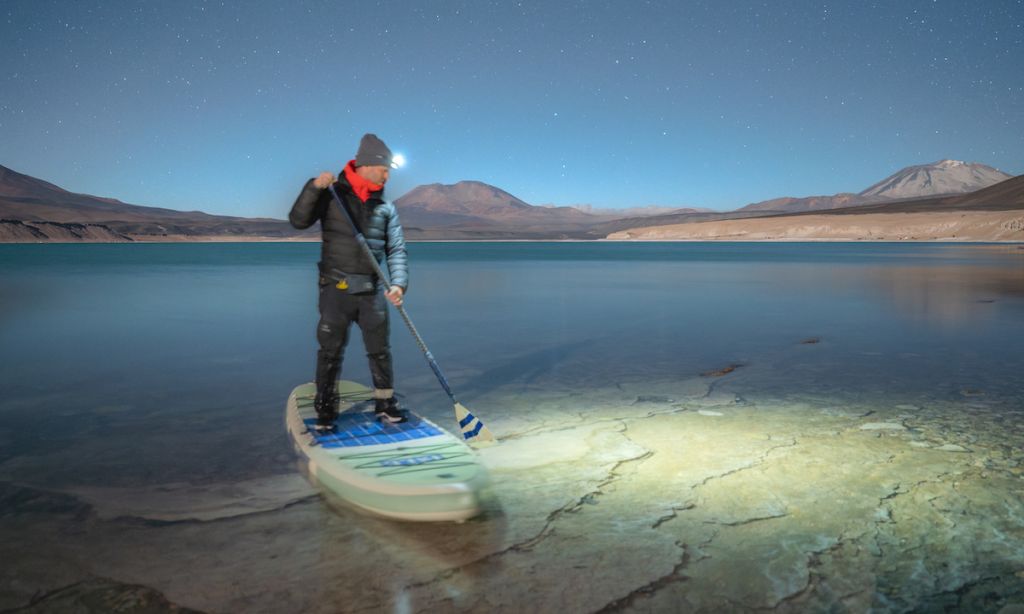Andrew Hughes Achieves World Record for Paddle Boarding Highest Altitude
- Written by Allie Beucler
- Published in News
- Comments::DISQUS_COMMENTS
SEATTLE, Washington - This winter, professional adventurer Andrew Hughes set out to paddle board the highest altitude body of water. In doing so, he ended up earning himself a world record for just that! Hughes found the volcanic pool of Tres Cruces Norte in Atacama, Chile – the highest alpine lake, sitting at an astounding 19,780 ft. And what’s more, Hughes wanted his record-breaking paddle to draw attention to the alpine lakes that are disappearing before our eyes, and more importantly, the reason they’re disappearing: climate change. We caught up with Andrew to ask him about his achievement and more. Check out our interview with him below.

Andrew: Raised on a small farm that my family ran as a bed and breakfast, I grew up exploring the woods of the Olympic National Park and waters of the Puget Sound. After completing graduate school in London and law school in Seattle, I became involved in politics and policy work eventually running for US Congress. Losing a hard-fought campaign led to facing several other unexpected challenges and the life I had constructed based on societal ideas of success crumbled but in doing so allowed me to see and then forge a new path forward. This path led to the mountains where I relearned to turn discomfort and challenge into growth and gratitude. Today at 42 I am happily married to my amazing wife Lauren – who I proposed to atop Mount Everest – and we share our home with our beloved Frenchie, Tank. My lifelong passion for adventure has led me to a dream profession as a sponsored high-endurance adventurer and athlete and I am in the process of founding a new outdoor gear company called Dialed Outdoors with a number of innovative products born from my years of experience in some of the most extreme environments on Earth.
I have also completed the Seven Summits (highest mountains on each continent) and six of the Seven Volcanic Summits (highest volcanoes on each continent) and am set to complete the rarely realized Explorers' Grand Slam in April, 2025 – a feat fewer than 75 adventurers have ever achieved – and which would make me the 19th American and 13th British/UK citizen ever to accomplish this endeavor. In 2020, I also became the fastest and first American man and third person ever to complete the Antarctica Trifecta with my adventure partner Roxanne Vogel by consecutively Skiing the Last Degree to the South Pole and reaching the summits of Mount Vinson (the highest mountain) and Mount Sidley (the highest volcano) in Antarctica. I also hold a Guinness World Record set on Mount Everest in Spring, 2021.
My expeditions have also evolved to focus on something that matters more than summits and reaching adventurous ends, that being making meaningful impacts in the world. Fueled by my commitment to sustainability, conservationism and combating climate change, I continue to raise awareness and funds for Human Rights Watch's work on the Environment and Human Rights, have created programs for youth engagement with the outdoors, and seek always to elevate voices of those who are on the frontline of climate change yet often are not given a prominent position to have their voices and views heard. Aligning and advocating for greater inclusivity and diversity in the outdoors is also fundamental to my view of the future of this space based on the belief that the more opportunities we can provide to create relationships with our natural world the more empathetic and likely people will be to seek to protect our planet. Additionally, breaking down social and economic barriers to provide greater access to our natural spaces and places is part of his perpetual purpose beyond the peaks and adventures.
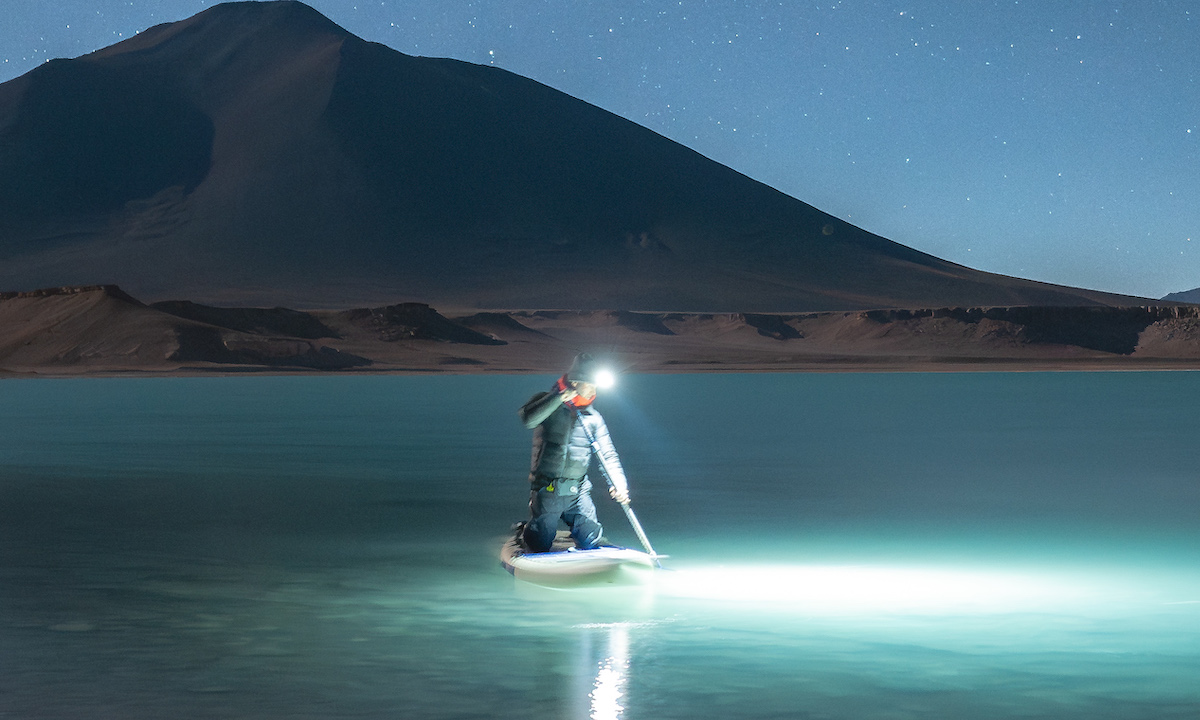
How'd you first get into paddle boarding and what piqued your interest?
Throughout my childhood I found myself on the water, whether it was sea kayaking camping trips in the San Juan Islands or sailing small Lasers on Puget Sound. When I moved to Seattle I found myself with my first opportunity to head off paddle boarding with friends on Lake Washington and loved the social aspect and challenge of it. Over the years I have embraced the opportunity to get out on the water with a paddle board and as the technology and design of boards has evolved my interest in integrating a paddle board into my other adventure pursuits started to come more and more into focus.
What do you love most about the sport?
Any time we can expand our experience of a place I think we also deepen our connection to it. For me, paddle boarding has provided me incredible access to enjoy elements of environments I was experiencing previously more singularly as I sought summits while I strolled by the beautiful lakes, pools and lagunas along the way. Paddle boarding has provided me the chance to find a reason to revisit and reconnect to places I have explored before and form new perspectives through this new form of experiencing.
Also as technology has made the mountains ever more linked to our lives back home, those periods when I am out paddling – hands consumed with the task at hand – I am giving that rare opportunity to once again disconnect to reconnect which is one of the special aspects of adventuring out into our natural world.
 |
 |
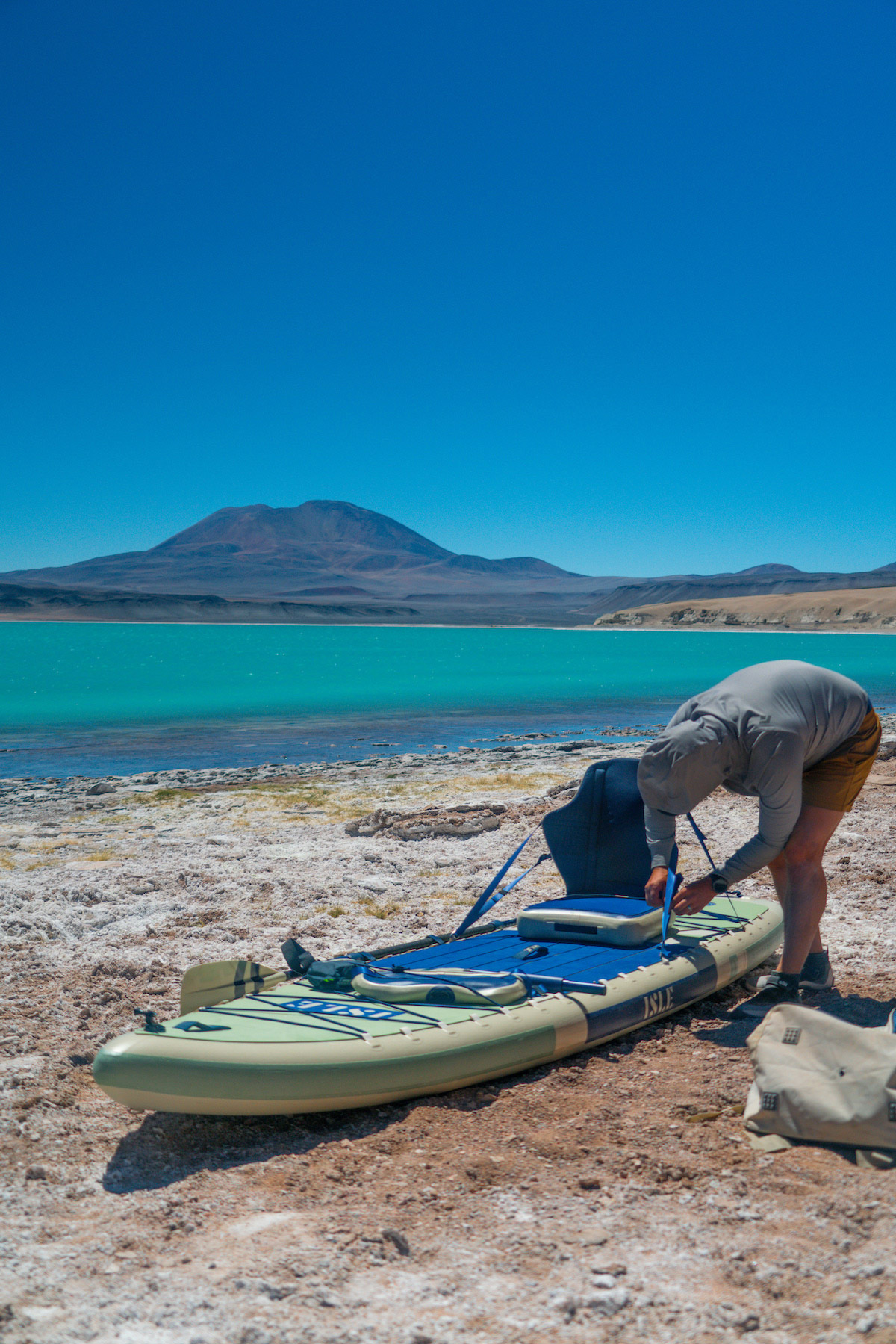 |
SUP/Kayaking at 19,000 ft. | Photos courtesy: Andrew Hughes
Where'd you get the idea for this world record attempt and what inspired you to achieve it? And why specifically this goal?
The idea for the record began during the early days of the pandemic some four years ago. When the world stopped, so did the expeditions I regularly took on. As it was for so many of us, within that time of isolation and stillness the opportunity to ponder the deeper meanings of our relationships to everything in our lives was provided – and for me that included my relationship to adventuring in the outdoors. It wasn’t necessarily the summits and remote explorations I missed, but the sense of connection to nature and the communities tied to these special places.
Having grown up in the Pacific Northwest, my life had been spent as much - if not more - on the water as it had been in the mountains. After climbing Everest and completing the Seven Summits, I felt a calling to expand my experience in the mountains by returning to the special places where I had witnessed rare waters gather and pool amidst the world's highest peaks and in so many unique locations. Integrating the use of a stand-up paddle board (SUP) or kayak to access, enjoy, and experience these unparalleled places simply felt like a natural evolution and extension of my explorations and a chance to deepen my connection to these elevated environments through a new form of adventuring.
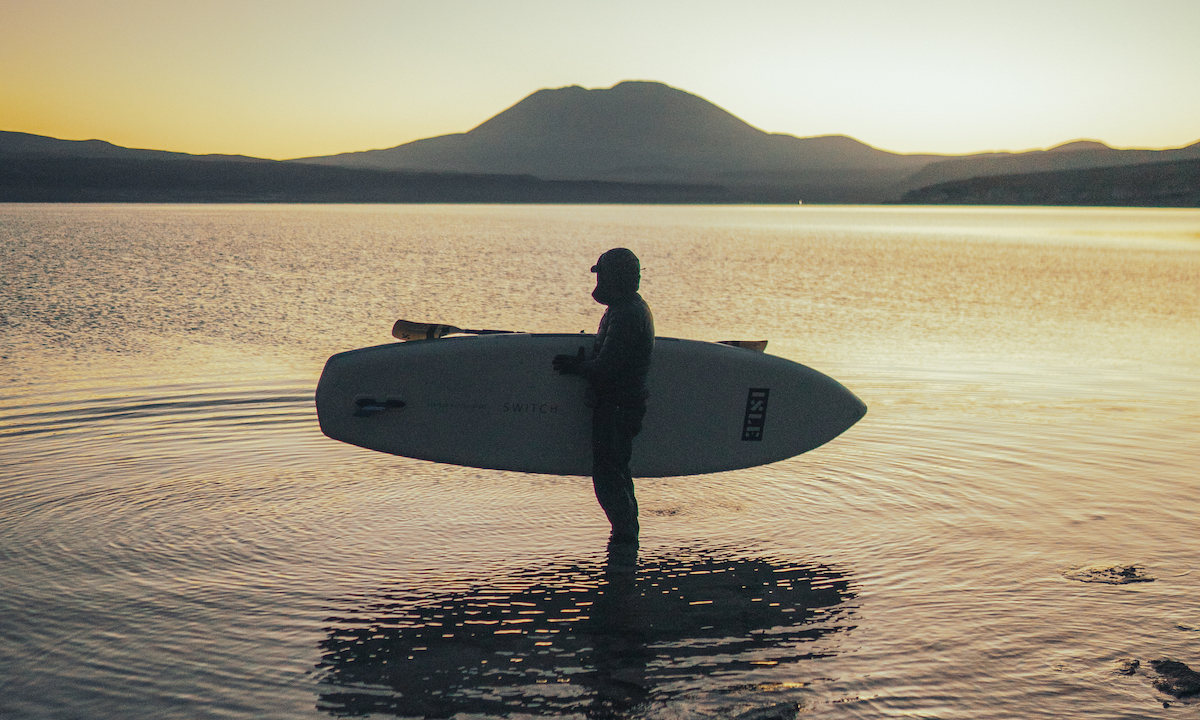 Sunset on the lake. | Photo courtesy: Andrew Hughes
Sunset on the lake. | Photo courtesy: Andrew Hughes
Tell me about the research process beforehand. What was that like? What was the timeline from idea inception to actual attempt?
Substantial research was undertaken as to the required components that had to be included for a new world record to be recognized and pre-approval was sought from Guinness World Records to make this attempt. Next was determining what gear had the durability and portability to survive flying several thousand miles, trucking across the driest desert in the world, and then being carried up a mountain on my back. Added ounces at altitude begin to feel like pounds as you ascend so each item packed was carefully considered. Most challenging was where such a record could even still be broken in the world. Most lists for highest altitude bodies of water include places where because of global warming those rare pools of water are believed to be extinct. Even the nearby Ojos del Salado pool – normally held as the highest pool of water on Earth not a lake because of its size - was reduced from its already small size to a non-liquid icy remnant of its previous state making it incapable of any water-based record. Thus, with substantial research and some advanced reconnaissance by my local logistics partner, it was deemed that only one real option remained left in the world – the volcanic pool of Tres Cruces Norte. After years of waiting for things to align in mid-December of 2023 they finally did so within a few weeks everything was put in place and the record attempt was put in motion for mid-January 2024.
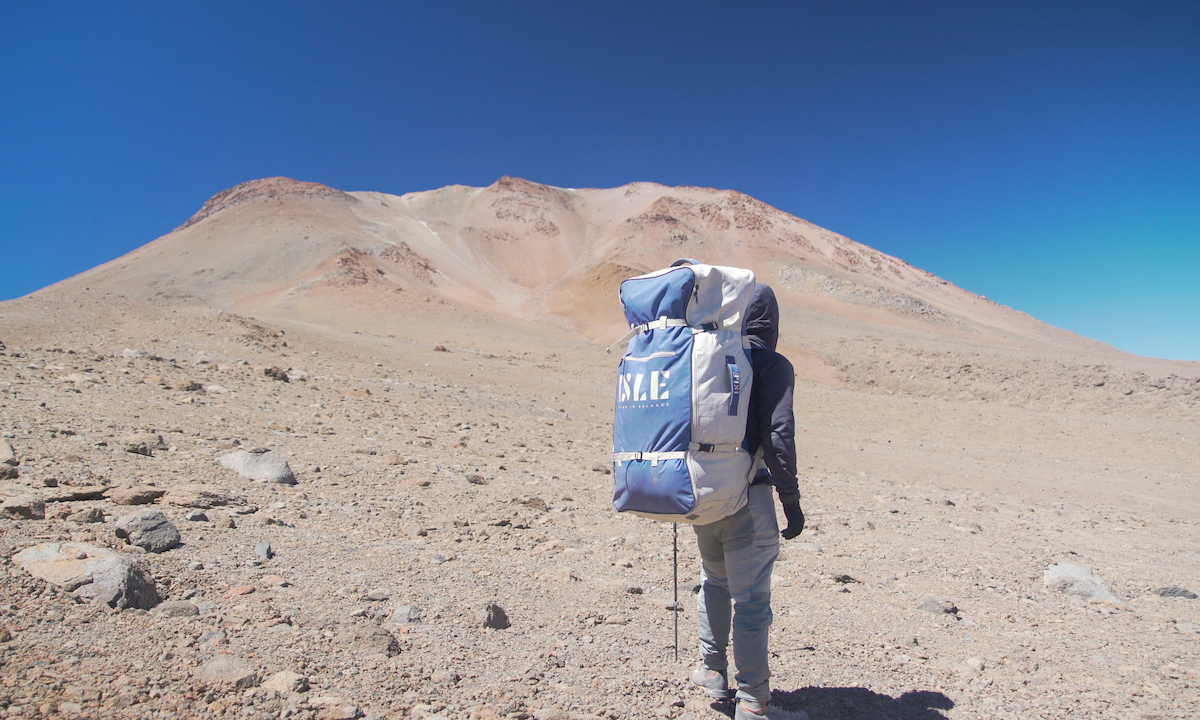
Tell us about the gear you took/needed for this attempt.
It all began with the right board that had the portability and durability to reach the record setting waters of Tres Cruces Norte in one piece and perform in the extreme environmental elements of the Atacama Desert and Andes. The ISLE Switch at around 18 lbs was an ideal option and the entire setup packed on my back came in around 38 lbs. With this base pack weight and the size of the pack I was able to add another 40lbs or so of expedition gear for the record ascent including consumables (water, food, fuel), sleeping bag, paddling gear, clothes, tent, and more. Not light by any means when scrambling up volcanic scree, but still possible in spite of the heavy painful carrying. Here is a list highlighting most of the kit carried up for the world record attempt:
Paddle Board + Related Paddle Gear
- Inflatable Paddle Board and Kayak: ISLE Switch (with all included accessories and pack here)
- PFD: Mustang Survival Minimalist Inflatable Life Jacket
- Shoes: Gill Aquatech Shoes
- Dry Suit: Crewsaver Atacama (used during lower practice sessions, but couldn’t fit into bag with other gear so went without in the record)
Accompanying Gear for Record & Climb:
- Hard Shell Pants / Layers: Arc’teryx + Patagonia mix (nothing new, several year-old pieces of kit that keeps on keepin’ on)
- Glasses: Vuarnet Glacier Glasses (their first version they released a few years ago)
- Hat: Dialed Outdoors
- Watch/GPS Tracking of Record: Garmin epix ProRecord
- Altitude Measurement Devices: Garmin InReach Mini
- Sleeping Bag: Feathered Friends -25 Bag
- Neck Gaiter: Buff
- Boots: Scarpa Zodiac Plus GTX
- Poles: Black Diamond Trekking Poles (really old ones, have been through many years with them)
- Nutrition During Record Attempt: Maurten gels and bars (had several of these only throughout the ascent, record, and descent) | Readywise Mac & Cheese (dinner, same meal I had at Camp 4 on Everest…just a little superstitious maybe) | Kodiak Cakes oatmeal packets (breakfast) with my mountain coffee made with Vital Protein Collagen Peptides Packet and two Starbucks Via packets
 |
 |
Nighttime paddles on the lake. | Photos courtesy: Andrew Hughes
What was the biggest challenge for you during this attempt?
Wish there had only been one challenge for this expedition – the world record itself – but that was not to be the case this time. This adventure was one of those where if something could go wrong…it did…and if it could be harder than initially anticipated…it was. The morning of my departure I awoke with a notice that all my flights were delayed or canceled forcing me to rebook everything and be at the airport not in several hours but within the hour. Then upon arriving in Chile I learned the airlines had lost one of my duffels filled with critical gear for my expedition – from my sleeping bag to my dry suit. I also caught a horrible sinus illness of some sort during my two days of travels to the Atacama, but in my rush to pack had put my travel medications in my now missing duffel. To say things didn’t start off smoothly would be a substantial understatement and it began to seem this expedition and project was not destined to be doable this time.
Thankfully after a week and on the last possible morning it could arrive in Copiapo for collection it did – but only after I spent multiple nights in the desert sleeping in what clothes I had for warmth in the absence of my bag suffering away with my unmedicated sickness. Even once reunited with my meds any time you get sick at high altitude it is always hard as the body is simply slower to recover and so this made the required acclimatization and climbing efforts for the record that much more challenging – but also now with some distance from those days all those challenges elevates my appreciation for the experience and its successful outcome in the end.
 Did anything surprise you along the way?
Did anything surprise you along the way?
The inarguable impacts of climate change altering both the anticipated water levels where the record was to be set and also altering the makeup of the mountains themselves was shocking. Several years ago climbing on these same peaks the snow and penitentes covered the slopes and this year they were all but absent. Their absence easily can be seen further contributing to water levels falling throughout the region creating a concerning future for the ecosystems and indigenous communities reliant on these rare and limited waters within this high desert. Climate change has put these highest bodies of water on Earth in its crosshairs and many such high-altitude pools from the Andes to the Himalayas are now already believed to be disappearing or are extinct.
After climbing to the summit of Tres Cruces Norte at 19,783 feet, we descended over 400 feet into the volcanic crater to reach the shoreline of the lake where I was to attempt the new world record. Immediately upon the descent concerns came into view as there were clear evaporation rings indicating a water level below the anticipated 5915 meters gathered from all satellites and reports available. Reaching the water's edge and pulling out my Garmin InReach satellite device, I was beyond relieved to realize that the pool sat at 5902M/19,364 feet. The record would not be shattered that day, but it would still be broken. However, we all were – and remain - surprised by how substantial the lake had lowered since last observed and measured and it drove home how such record setting projects could be used for so much more critical observational research gathering in the future of these hard to reach and rarely visited locations.
Was paddling an alpine lake different in any way from paddling other bodies of water? If so, how?
A majority of my experience paddling had been at sea level ranging from freshwater lakes such as Lake Washington near my home or on open waters from the Puget Sound to Caribbean Sea. During this expedition a few things became clear immediately during my first practice session.
First a majority of the high-altitude lakes within the Atacama have an incredible level of salination in the water which immediately dries and cakes on to everything cementing with salt a lot of the more modular components of my SUP setup – this means following each session it is a must to rinse and clean your setup as best as possible.
Second was the additional effort required for inflation of my board at elevations ranging from over 14000 feet up to the record setting height of 19,364 feet – the time to get the board ready was nearly triple in length from back home.
Finally, the desire to paddle on high altitude alpine lakes means embracing immense effort for access which contrasts from paddling at home where I can easily drive near a shore and get on the water quickly. For these alpine paddling objectives, you earn your chance to paddle out on these precious pools of high-altitude water.
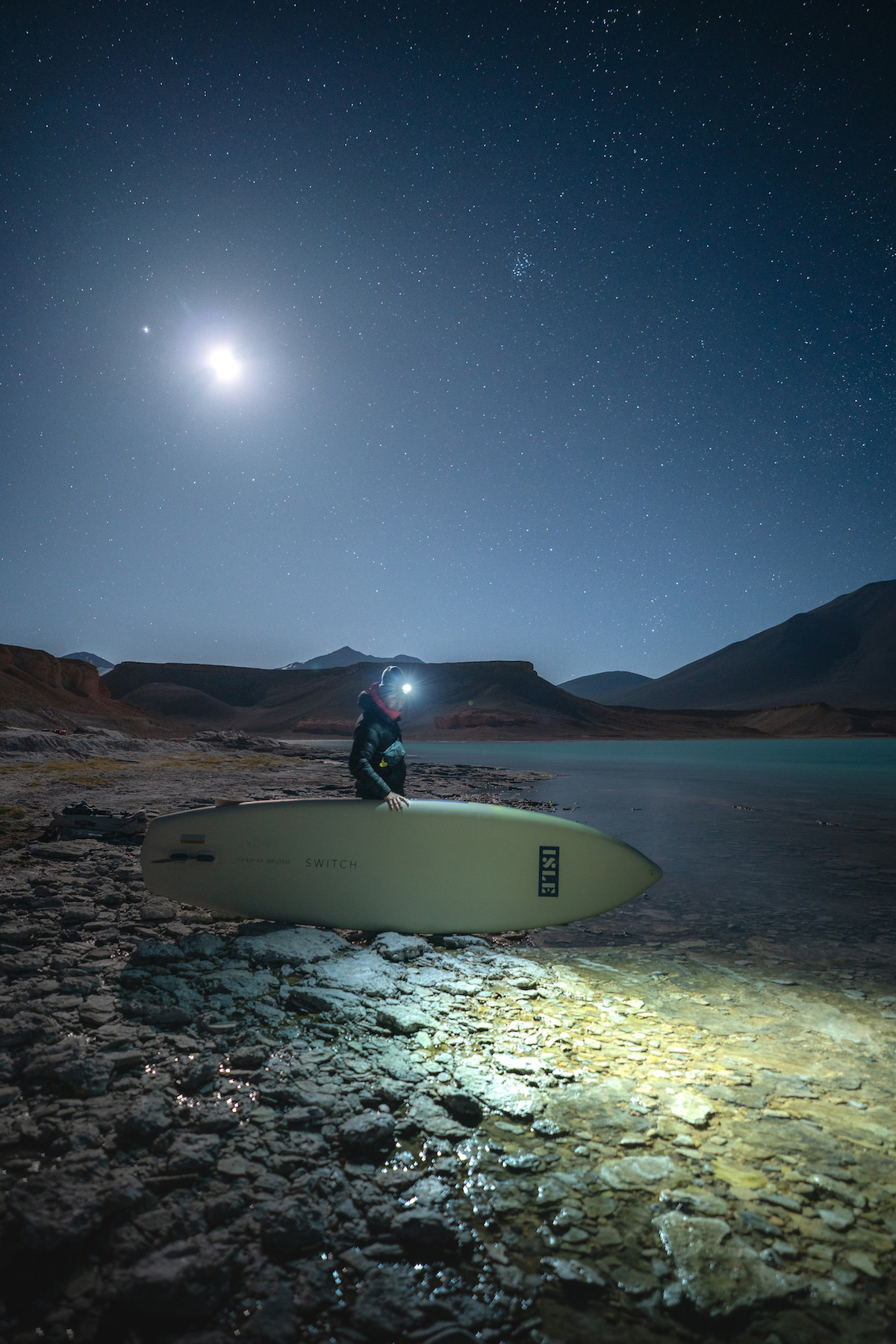 |
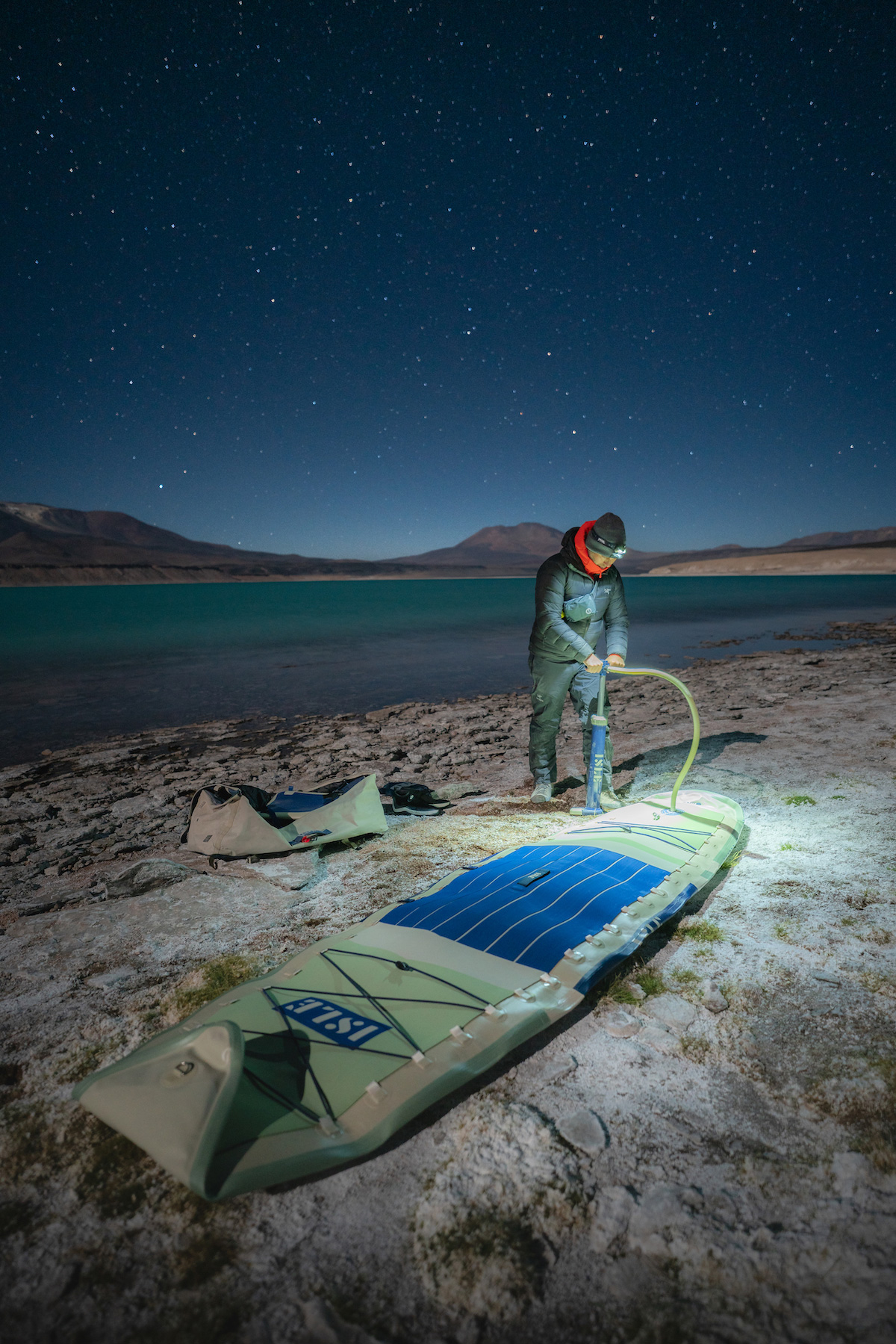 |
Photos courtesy: Andrew Hughes
What was your biggest takeaway from this experience?
Over the years I have seen the progressive impacts of climate change on the many environments, ecosystems, and local communities connected to the places where my expeditions lead me. It has made me reassess how we can seek to be more sustainable in the way we explore and reaffirm my belief that through our adventures we should seek to become better advocates. A world record – like the one I just realized - is simply an opportunity to explore the deeper diverse elements that define a place and a chance for a more empathetic understanding of it so we can champion the preservation and protection of these special parts of our shared planet.
If you could do it all over again, would you? Would you change anything?
Without hesitation I would do it all again. The journey to return to the Atacama and to reach the record setting waters within the Tres Cruces Norte volcanic crater wasn't easy, but once on the water everything else that had gone wrong up till that moment really washed away as a pure sense of excitement and experiencing anew washed over me. Through this new approach by means of integrating paddling amongst these high places and peaks I felt a more expansive connection to a place I had previously known. It also proved conceptually this form of adventuring was possible. It married my childhood days on the water with my adult days on the world’s highest peaks – pairing them in a meaningful way I never thought achievable.
Would I have changed getting sick and having my bag lost – absolutely. But those elements elevated my sense of empowerment that such a peak paddling project could be completed. And if I was able to do it in the face of such adversity and challenges and still feel my heart calling to seek to do these kinds of projects again…that is heart calling I will heed.
There is one thing I would change and will incorporate on any similar projects in the future and that is seeking out field research collaborations with those studying climate change in the hope of using my expeditions as vehicles to extract scientific value for those working to bring light to the environmental issues altering and gravely impacting these places my expeditions take me.
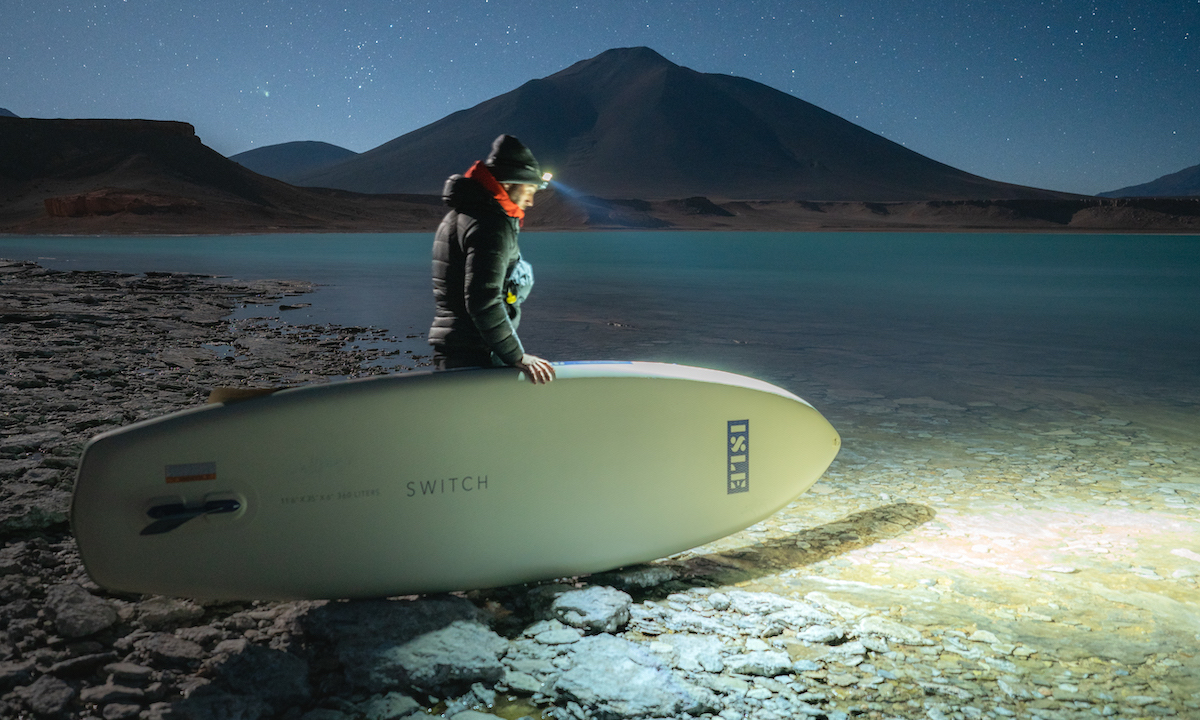 Photo courtesy: Andrew Hughes
Photo courtesy: Andrew Hughes
Do you have any more attempts coming up in the future?
This paddle board record I set in Chile really has laid the foundation for this form of adventuring for me and I am in the process of building out a number of projects that will push paddle boarding and paddle sports to places and heights they have never been with two major projects hopefully coming in the second half of this year.
Sounds amazing! We can’t wait to see what’s in store for you in your next adventure.
© Copyrighted Exclusive SupConnect.com Content.
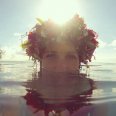
Allie Beucler
Allie Beucler is orginally from Kona, Big Island and, as an islander, her life has been in the water – ocean more precisely. She has been a sponsored competitive surfer, represented the NSSA College National Champions while surfing for San Diego State University, and today remains deeply connected to the watersports lifestyle. Brown is both a shortboarder and a paddleboarder, loving to take out her inflatable SUP for a ride. With a journalism degree from San Diego State University and her passion for the water life, she brings an excellent combination of skill and passion to Supconnect.
Email This email address is being protected from spambots. You need JavaScript enabled to view it.
